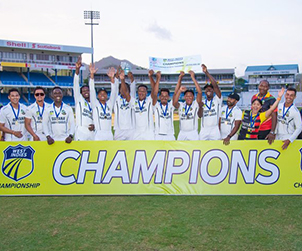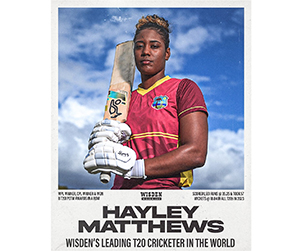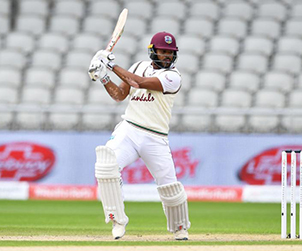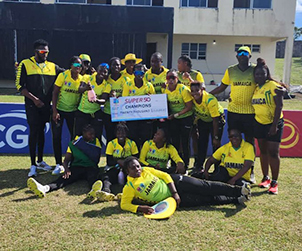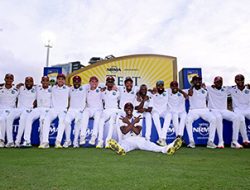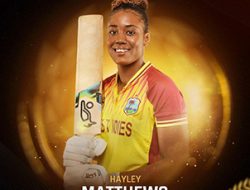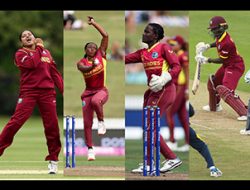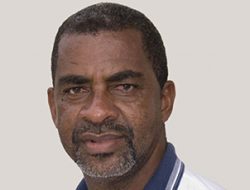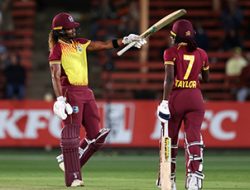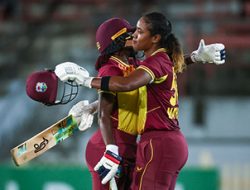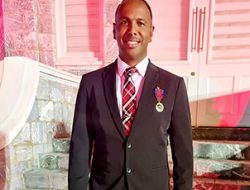On their four previous tours of Sri Lanka, West Indies have been blighted by one setback or another. The solitary Test in 1993, the first between the teams, a dozen years after Sri Lanka’s elevation to the status, was restricted by a swampy outfield in Moratuwa to less than 12 hours play; only one of the three ODIs ran its course.
In 2010, Sri Lanka’s heaviest and most widespread rainfall in 18 years caused floods and landslides that displaced 300,000 people. There was enough play in Galle for Chris Gayle to accumulate 333, but overall, fewer than half the scheduled overs were bowled in the three drawn Tests. Ultimately the five ODIs were postponed and West Indies returned home.
The one trip unaffected by the weather, in November 2001, brought the joy of Brian Lara at his glorious best in a fascinating contest against Sri Lanka’s spin wizard, Muttiah Muralitharan. It was counter-balanced by the home team’s 3-0 clean sweep of the series.
The left-handed maestro’s Test average had dipped below 48 following 15 innings without a hundred; he announced that he intended to raise it back above 50 in Sri Lanka. Even for Lara, it seemed a ridiculous assertion. The magic figure was reached with his second-innings 130 in the final Test, in Colombo, which followed his 221 in the first innings. His tally was 688 in six innings at an average of 114.66.
Lara apart, Muralitharan’s prodigious turn, teasing flight and clever variations, and the left-arm swing of Chaminda Vaas exposed the frailties of the rest of the batting; those two bowlers accounted for 50 of the 60 wickets to fall. Later, Muralitharan classed Lara as “the best player that has ever been”.
The latest team arrived in Colombo last weekend, underprepared after four months confined to the Caribbean Premier League T20s but not a single first-class or 50-overs match since the two Tests against Australia in June.
Two days before departure, the young, largely inexperienced squad, under 23-year-old Jason Holder, the new Test captain, was sidetracked by the suspension and the withdrawal from the tour of head coach Phil Simmons by the WICB, following his public allegations of “outside interference” in the selection of the ODI team.
The WICB chief executive Michael Muirhead immediately summoned him to a meeting to “answer breaches of confidentiality and bringing the WICB into disrepute”. The intention was to reach a decision on his future within seven working days; it has now been put back a week on the intervention of Simmons’ lawyers. It could drag on.
The issue has impacted the team. Chief selector Clive Lloyd, correctly identified by Simmons as unsuccessfully voting with him for the reinstatement of Dwayne Bravo and Kieron Pollard to the ODI squad – the crux of the matter – has since distanced himself from the coach.
He admitted that in the seven months Simmons was in charge, he did “a good job in building team unity and morale”. The players had “warmed to his coaching methods”. For all that, Lloyd declared, “we cannot condone such outbursts”. His media statement did not mention a swift resolution or the possible return of Simmons; perhaps he had to tread carefully, wary of preempting the WICB.
Holder had no such qualms. He surely knew it was one of the first questions he would have to field on arrival in Sri Lanka. When it came, he was ready. “The comments made by Phil were by Phil and I can’t comment on those things,” he said. “Whatever his situation, his fate lies with him and the board. We can only control the cricket because that is what we came here to do.” The preamble was bland enough.
He then expanded. “No doubt it is a setback for us. I just hope the situation is solved quickly because we would love to have him back. He’s been a wonderful inspiration to our team thus far.”
They were sentiments he could hardly have made without knowing the thoughts of his players. They are under an interim coach, Eldine Baptiste, one of the three selectors who defeated Lloyd and Simmons in the ballot over Bravo and Pollard.
It is not that the WICB would bow to the captain and the players without satisfactory answers from Simmons, simply that the panel that sits in judgement also takes into account the comments of the captain.
The coaching conundrum was compounded by the weather. On arrival, West Indies were confronted by the seasonal monsoon rains that kept them indoors for much of their early practice and training. It was not unusual for October; the average rainfall for the month is 369 millimetres, just short of May, the wettest, at 382 millimetres.
Their solitary warm-up match, meant to include all 15 players, was put back by a day because of a sodden outfield. Once underway, they scrapped to 206 on what was reportedly a difficult pitch and, after Kemar Roach had claimed wickets with the first two balls of the innings, were kept in the field for the remaining play as opener Udara Jayasundera, 20-year-old wicket-\keeper Minod Bhanuka, and Mahinda Siriwardena all scored hundreds in a total of 455 for six. The inability of legspinner Davendra Bishoo, on whom they are depending, and left-arm spinner, the newcomer Jomel Warrican, to take a wicket added to their worries.
It was either a troubling lead-in to the first of the two back-to-back Tests for players yet to find their way at international level or a necessary character-building exercise. The first match starts on Wednesday in Galle, and the second, at the P Sara Oval in Colombo, runs from October 22 to 26, leading in to three ODIs and two T20s.
Sri Lanka Cricket’s interim committee fears the absence of the IPL stars means it will make a loss on the visit. The committee’s vice-president, Kushil Gunesekara, noted that TV rights would earn 45 million Sri Lankan rupees (US$320,770), against 55 million ($392,053) from earlier tours by Pakistan and 300 million ($2,138,472) from India.
As it is, the Test retirements of their three most celebrated players, Kumar Sangakkara, Mahela Jayawardene and Tillakaratne Dilshan, has further diminished public interest.
If it isn’t one thing, it’s another for West Indies cricket in the fall from its proud position at the head of Test cricket’s table since the turn of the 21st century to its present state.

